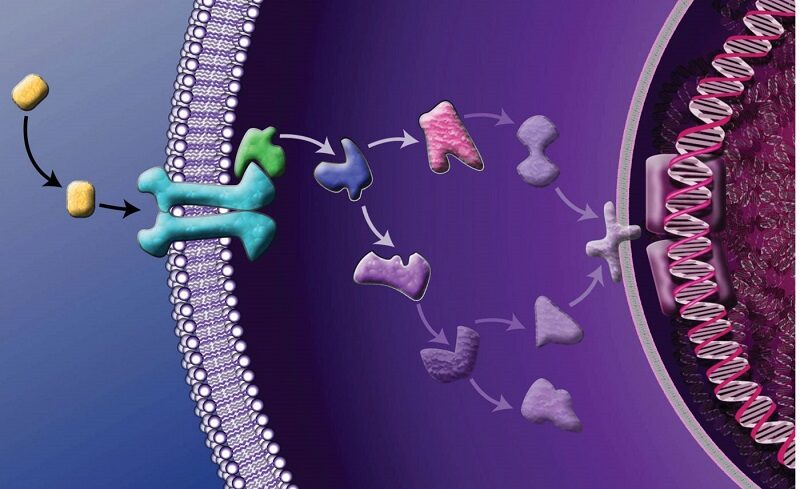
Now a team led by Jennifer Cochran, PhD, professor of bioengineering and Shriram chair of the department of bioengineering at Stanford University, has altered one ligand that produced two dramatically different results. One set of alterations regenerated neuron cells, while the other alteration to the same protein inhibited lung tumor growth.
Their results are published in the Proceedings of the National Academy of Sciences and performed in mice that model actual diseases. These results give hope to eventually treating neurodegenerative diseases as well as cancers.
A specific ligand will have a specific receptor that typically binds only that ligand like a lock and key. Researchers can change the lineup of amino acids in a ligand, essentially making millions of keys that they screen to see which might unlock its matching receptor. A key that fits better and trips the lock more efficiently is called a superagonist. Bioengineering may also be used to turn ligands into antagonists — keys that also fit the receptor lock, but in a way that blocks the signal.
"I have long been fascinated with how proteins function as nature's molecular machines, and how the tools of engineering allow us to shape protein structure and function with the creativity of an artist, in this case using amino acids as our palette," Cochran explained.
In 2019, Cochran teamed up with Alejandro Sweet-Cordero, MD, associate professor of pediatrics, University of California, San Francisco, where they slowed the spread of a type of non-small cell lung cancer in mice by neutralizing a single protein. The new study builds on that work where a research team led by graduate student Jun Kim engineered the ligand known as CLCF1 which binds with the CNTFR receptor.
By making one set of amino acid alterations in CLCF1, Kim turned that ligand into a superagonist. When they added this superagonist to a tissue culture of injured neuronal cells, the engineered CLCF1 increased the messaging signals which promoted the growth of axons, suggesting that this modified ligand was encouraging wounded neurons to regenerate themselves. By introducing amino acid alterations to CLCF1, Kim and his team were able to turn this ligand into an antagonist that could inhibit the growth of lung tumors in mice.
These proteins may one day be used to treat neurodegenerative diseases and cancer.



Cancer has been cured, in multiple ways, for nearly a century.